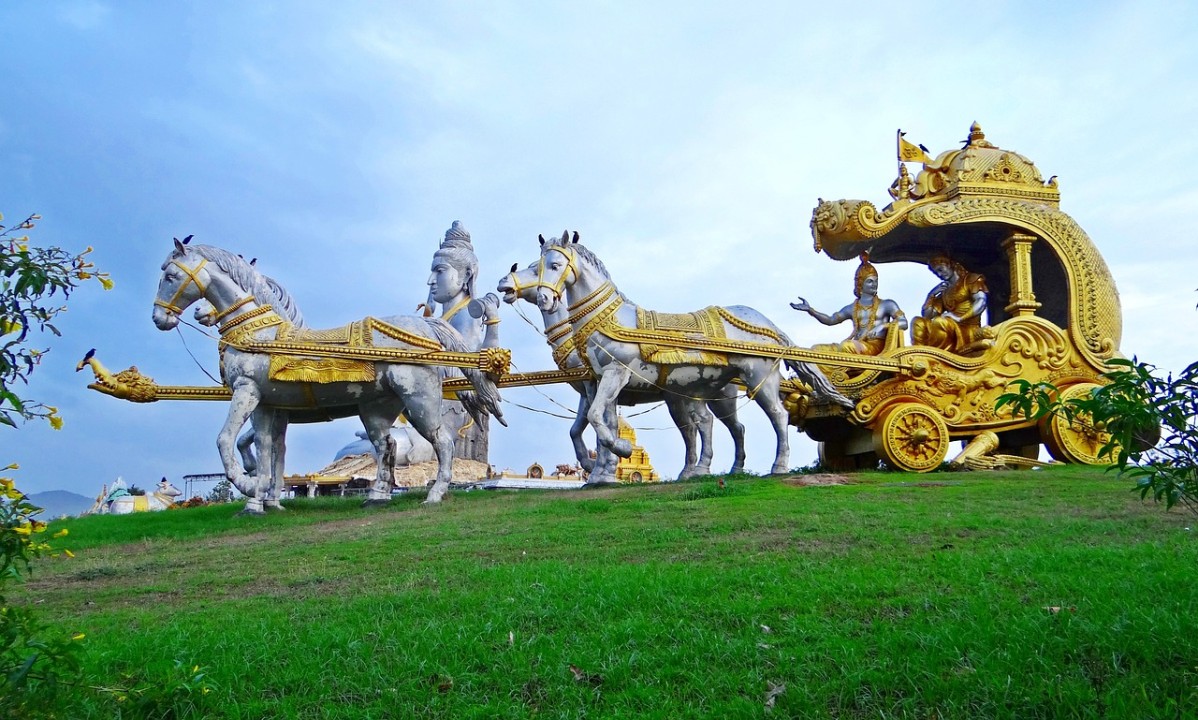
The concepts of Doer, Experiencer, and Observer in Bhagwat Gita.
The verse Gita 14.19 (Sholk 19 of Adhyay 14 of Bhagwad Gita) holds a profound significance in Hindu philosophy, as it explains the concept of transcendence beyond the three gunas (modes of material nature). It suggests that when one perceives no agent of action other than these modes and knows That which is beyond them, one attains liberation or union with the divine (Brahman).
This verse encapsulates several key philosophical ideas of Non-dualism, Detachment, Self-realization and Liberation.
नान्यं गुणेभ्यः कर्तारं यदा द्रष्टानुपश्यति |
गुणेभ्यश्च परं वेत्ति मद्भावं सोऽधिगच्छति ||
Transliteration:
nānyaṁ guṇebhyaḥ kartāraṁ yadā draṣṭānupaśyati
guṇebhyaś ca paraṁ vetti madbhāvaṁ so ’dhigacchati
English translation: "When the seer beholds no doer other than the gunas (modes of nature) and knows That which is beyond the gunas, he attains My being."
Meaning: This verse conveys that true spiritual realization comes when one understands that all actions are performed by the gunas (sattva, rajas, and tamas) of material nature, not by the self. Also, when one recognizes the transcendental nature of the soul beyond these material modes, they attain union with the Divine (Krishna or Brahman).
Context: This verse appears in Chapter 14 of the Bhagavad Gita, which explains the three gunas of material nature. Krishna is teaching Arjuna about how these gunas influence all aspects of material existence and how transcending them leads to spiritual liberation.
Relevance:
1. Philosophical understanding: It encapsulates key concepts of Vedantic philosophy, including the nature of the self, action, and liberation.
2. Spiritual practice: This verse serves as a guiding light for practitioners, leading them to cultivate detachment from material identifications and seek higher spiritual awareness.
3. Psychology of action: This verse offers profound insight into the motivations behind human behaviour. It attributes actions not to an individual ’doer’ but to the interplay of natural modes, thereby providing a unique perspective on the psychology of action.
4. Path to liberation: It outlines a clear criterion for spiritual advancement - the ability to see beyond the gunas and recognize the transcendental nature of consciousness.
5. Integration with other teachings: This verse aligns with and supports other key ideas in the Gita, such as karma yoga (the yoga of action) and jnana yoga (the yoga of knowledge).
Modern application: In present contexts, this teaching can help us understand the nature of the self beyond conditioned behaviours and thought patterns, potentially informing psychological and spiritual growth practices.
More importantly, this verse touches on the concepts of Doer, Experiencer, and Observer, though not all are explicitly mentioned. These concepts are essential in various Indian philosophical schools, especially Vedanta and Samkhya. They elucidate the essence of consciousness, action, and experience.
1. Doer (Karta): The concept of the doer is directly addressed in this verse. The Sanskrit term "kartāraṁ" means "doer" or "agent of action." The verse states:
"नान्यं गुणेभ्यः कर्तारं" (nānyaṁ guṇebhyaḥ kartāraṁ) Meaning: "[When one sees] no doer other than the gunas"
This implies that the true doer of actions is not the individual self but rather the gunas (modes of material nature). It challenges the common notion of individual agency.
2. Observer (Drashta): The observer is explicitly mentioned in the verse:
"यदा द्रष्टानुपश्यति" (yadā draṣṭānupaśyati) Meaning: "When the seer beholds"
Here, "draṣṭā" means "seer" o

Recent Comments